A selection of the best varieties of eggplant for a polycarbonate greenhouse
Eggplant is well known to gardeners as a healthy, nutritious vegetable with a piquant taste. Its other name – “Indian berry” – speaks of its origin and high requirements for warmth, sun and daylight hours.
In the northern regions, growing a capricious crop is possible only in a polycarbonate greenhouse, and the use of modern varieties and hybrids will greatly facilitate care. In order not to get lost in the assortment of eggplants for greenhouses, we suggest studying a selection of the best.
Features of choosing an eggplant variety for polycarbonate greenhouses
Varieties recommended for cultivation in open ground differ from their greenhouse counterparts not only in terms of light and heat requirements, but also technical parameters: ripening time, height and power of the bush, fruit size and yield, resistance to diseases and pests.
For polycarbonate greenhouses, varieties and hybrids should be selected:
- early and mid-season;
- low and medium height bush;
- with a compact crown;
- with increased resistance to diseases;
- self-pollinating (it is not always possible to attract bees and other pollinating insects to the greenhouse).
Suitable varieties
Of the wide range of eggplants, the most popular among gardeners have become easy-to-care, resistant varieties and hybrids, which even a beginner can easily cope with growing.
Namesake
Mid-early eggplant, forming medium-sized bushes up to 140 cm high. Plants are sparsely leafy and compact.The fruits are fleshy, broadly ovoid in shape, dense and heavy - the weight of the fruit reaches 900 g, their length is up to 14 cm. The skin of the ripe vegetable is pinkish-purple in color, the flesh is white. The plant has sparse thorns. This variety is grown using a garter.
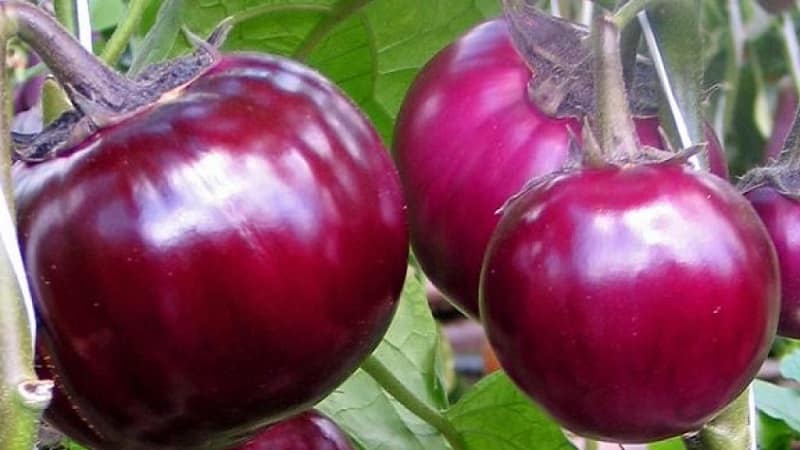
Joker
Eggplant from the breeding and seed company "Manul", characterized by early ripening and unusual racemose type of fruiting. Eggplants hang 3-7 pieces on a branch, and up to 70 vegetables can be collected from one plant.
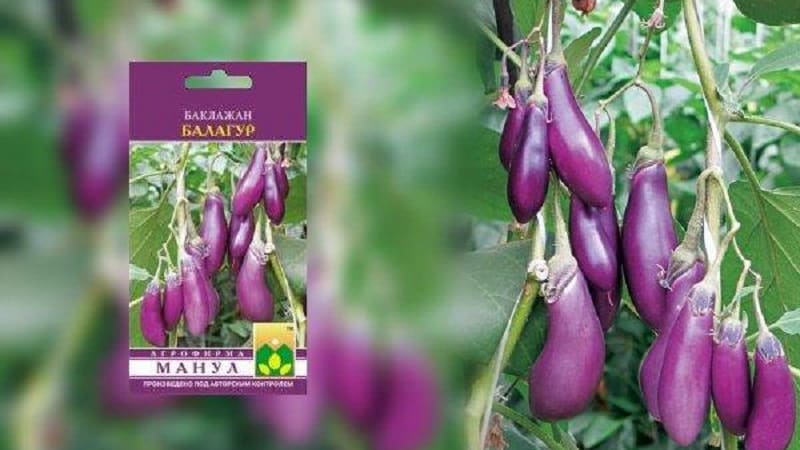
Sami fruits are small in weight - 80-130 g, elongated, pear-shaped. The skin is thin, glossy, bright lilac in color. The pulp is dense, white, of high taste, without bitterness. Needs careful care and obligatory tying to a support.
Robin Hood
Suitable for growing not only in greenhouses, but also in open ground. Mid-season, forms tall, up to 100 cm, powerful bushes that require additional support and regular removal of stepsons. The fruits are pear-shaped, deep purple in color, weighing 200-300 g. The skin is thin, the flesh is cream-colored, with a rich taste and slight pungency.
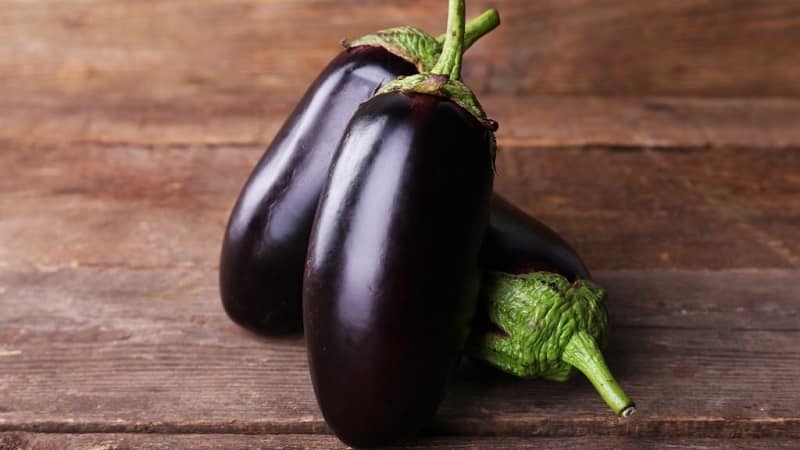
Black handsome
Mid-season variety from the Poisk agricultural company. The plants are low – 50-60 cm, compact, with few branches. In one and a half months, oval fruits with glossy purple-black skin and white pulp, without bitterness, ripen. The length of a ripe vegetable is 12-15 cm.
Black beauty is suitable for drying and canning. The gardener will be pleased with its unpretentiousness to growing conditions, excellent taste and high yield.

Nutcracker
Early ripening and unpretentious hybrid. From the emergence of seedlings to harvest, only 1.5 months should pass.The plant forms spreading bushes up to 80 cm high. The fruits are thick, wide, oval-pear-shaped, 12-145 cm long and weighing up to 600 g. The skin of the vegetable is glossy, dense, black-violet in color. The harvest can be harvested in several stages.
The value of the hybrid is its excellent taste, regular fruit formation, good shelf life and versatility of use.
Reference. The F1 mark on the seed packet indicates that the plant is a first generation hybrid. They have a number of advantages over varieties, in particular increased resistance to pests and diseases.

Bagheera f1
Mid-season hybrid with powerful and tall bushes up to 1.2 m. The fruits are oval in shape and medium weight, long – 16-20 cm, dark purple in color, shiny. The skin is dense, glossy. The pulp is white with a greenish tint. The taste is delicate, without bitterness.
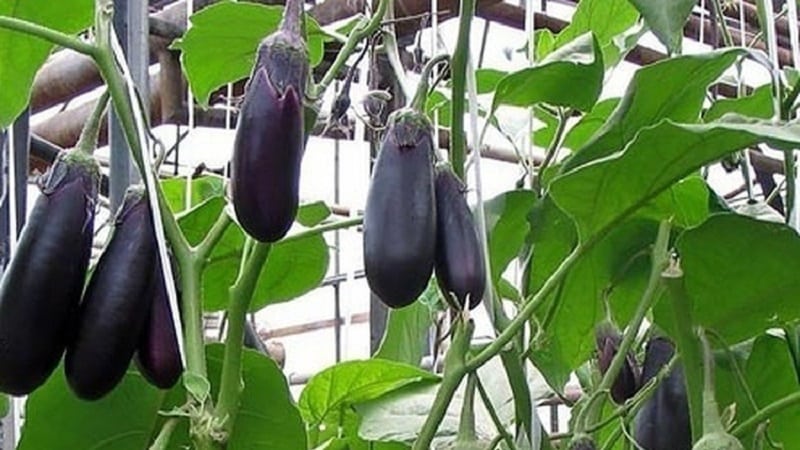
Purple miracle f1
High-yielding and early ripening hybrid, known since 1999. Plants are medium-sized, compact. Purple miracle can be grown in greenhouses and open ground. The fruits are narrow, dark purple, up to 30 cm long and 5-7 cm in diameter.
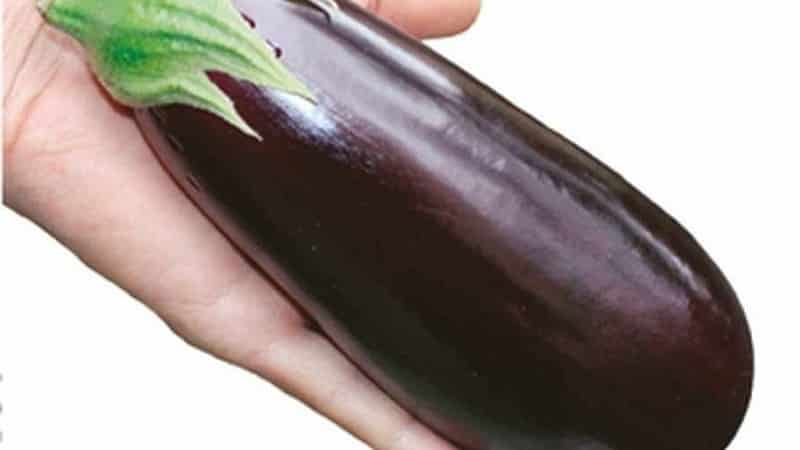
Resistant to temperature changes, short-term frosts and high resistance to disease. When stored, the fruits do not wither for a long time.
Reference. In the line of modern eggplant varieties for greenhouses, you can choose vegetables with both a traditional purple color and an unusual white or, for example, green color. The taste of such exotic fruits lacks the usual pungency and is softer.
Icicle
White eggplants of elongated cylindrical shape. The skin and pulp of the fruit are snow-white.The plants bear fruit consistently at different temperatures and are suitable for growing in unheated greenhouses, greenhouses and open ground. The taste of the fruit is delicate, devoid of bitterness. The plants are self-pollinating.
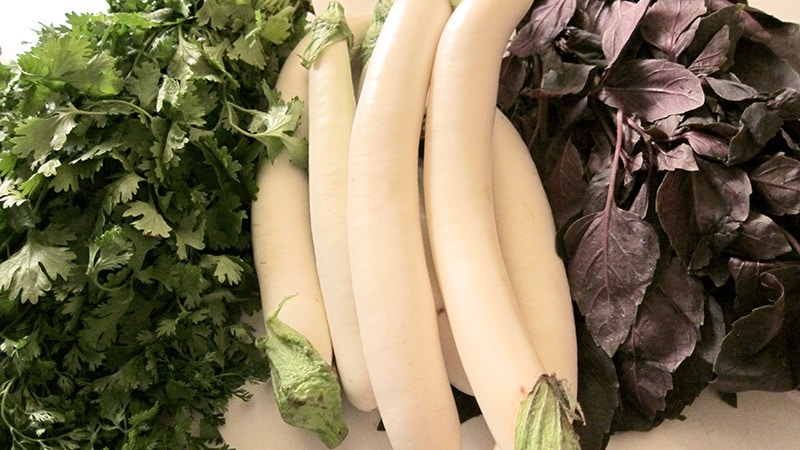
Alenka
Medium ripening plants, tall and compact. The fruits are bright green, cylindrical, glossy. The pulp is light green in color, with a sweet taste, and contains a lot of ascorbic acid. The fruits are recommended for fresh consumption and for preservation. Self-pollinating variety.
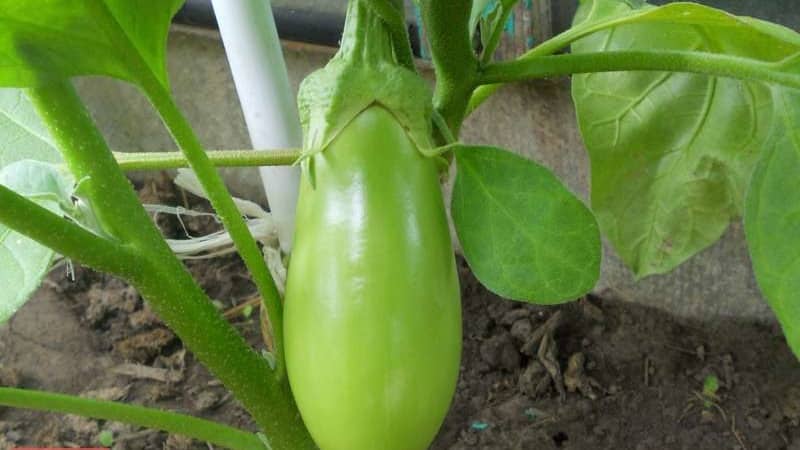
Sancho Panza
Mid-early variety of domestic selection. The bushes are tall, in greenhouse conditions they grow up to 150 cm, and need support. The fruits are densely purple in color, large, and spherical in shape. The average diameter of the vegetable is 14 cm. The variety is affected by spider mites in dry, hot weather.
Suitable for any type of cultivation: open ground, spring and winter greenhouses.
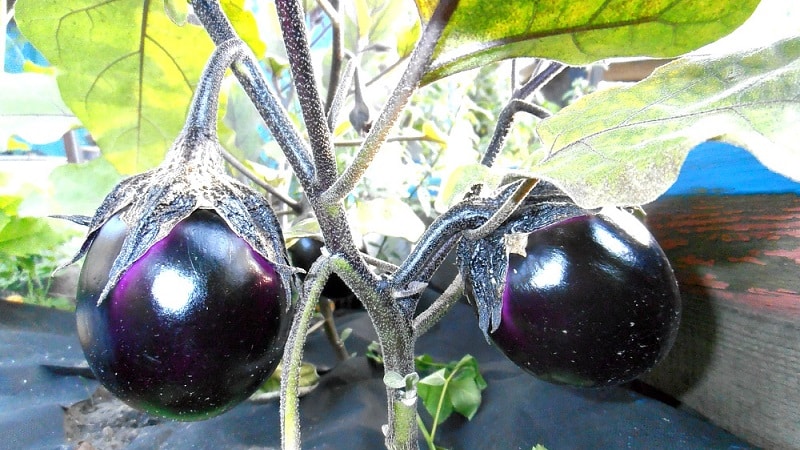
Bibo f1
Another eggplant with snow-white fruits, only Dutch selection. The hybrid is an early ripening one. The plants are low-growing and spreading, open-type, with short internodes. The bush ripens many oval-conical fruits, reaching a weight of 300-400 g. The fruits are small in size, only 15-20 cm. The yield is high - up to 6 kg per square meter. m.
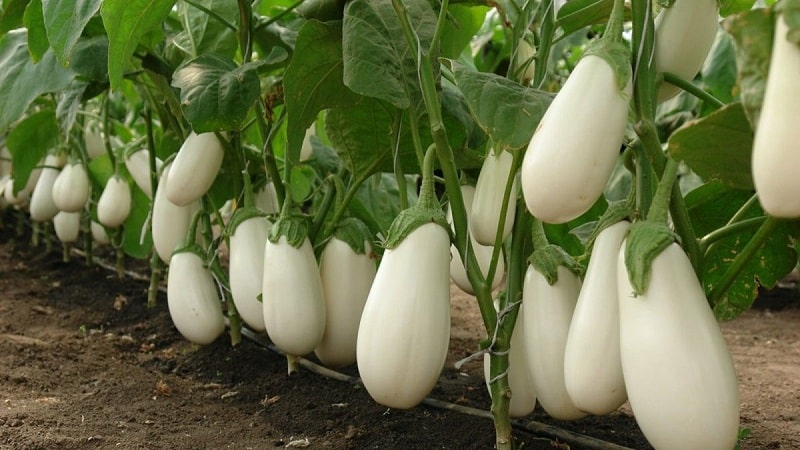
Sailor
Mid-season eggplant with small pear-shaped fruits, “dressed in striped vests”. The purple skin of the fruit is covered with numerous milky white streaks. Recommended for use in canning and pickling in pieces. The plants are beautiful and will decorate any garden and even a mixed border.
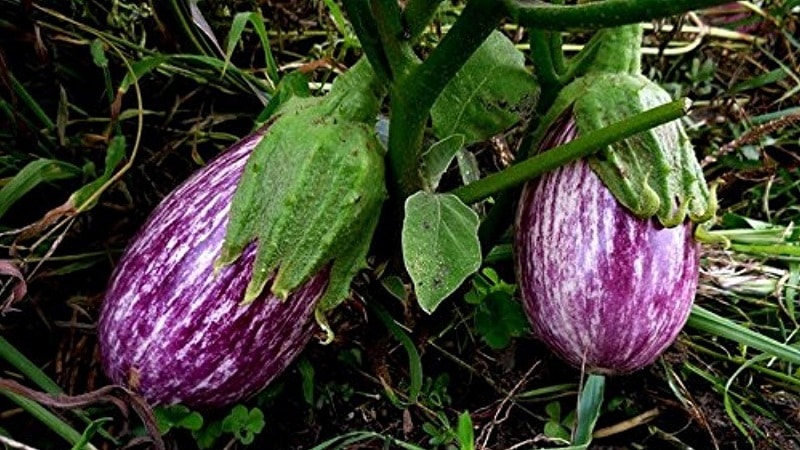
How to choose the best variety
There are so many advances in seed selection that when you come to the store, you get lost and don’t know what to choose. To avoid making a mistake with your choice, think through a plan for future plantings in advance.
When choosing seeds, be sure to consider:
- greenhouse area (for a standard-sized greenhouse, 1-2 productive hybrids are enough);
- planting density (for a compacted pattern, options with a compact, sparsely leafed crown are suitable);
- desired time for harvesting vegetables;
- personal taste preferences;
- greenhouse climate (heated or not);
- for food or storage.
If the greenhouse area is standard, then 2-3 productive hybrids are enough.
comparison table
|
Name |
Ripening time, days | Plant height, cm | Average yield, kg per sq. m | Fruit weight, g |
Variety value |
| Namesake | 120-130 | 120-170 | 7-8 | 500-900 | Resistance to tobacco mosaic virus and high adaptation to adverse factors |
| Joker | 80-100 | 70-90 | 7 | 120-130 | Resistance to flower drop and tobacco mosaic virus |
| Robin Hood | 100-120 | 90-100 | 2,5 | 300 | Easy adaptation and fruit setting in any conditions |
| Black handsome | 100-120 | up to 80 | 3,0-6,5 | 200-250 | Unpretentiousness, high taste qualities |
| Nutcracker | 100-120 | 90-100 | 10-12 | 500-800 | Recommended for long-term storage, only in protected soil |
| Bagheera F1 | 110-120 | 70-120 | 2,5-3 | 250-300 | Suitable for low-volume technology, no thorns, high commercial quality |
| Purple Wonder F1 | 90-100 | 90-100 | 7-8 | 400 -500 | Resistant to verticillium wilt, stores well and tolerates transportation |
| Sancho Panza | 120-130 | 70-150 | 7,5 | 600-700 | Resistance to tobacco mosaic virus, unusual fruit shape |
| Icicle | 110-115 | 70 | 8 | 150-200 | Unpretentiousness, unusual color and shape, excellent taste |
| Alenka | 107-110 | 150-170 | 6,5-7 | up to 350 | Tolerates sudden temperature changes, ideal for growing in risky farming areas. Recommended for growing for sale. |
| Bibo F1 | 90-105 | up to 85 | 4,8 | 190-210 | Not affected by fusarium and tobacco mosaic virus, does not drop flowers due to temperature changes |
| Sailor | 100-110 | 60-75 | 7-8 | 250-500 | High resistance to Verticillium wilt, excellent taste, original color. |
Which variety is suitable for different regions?
The closer you go to the north, the more difficult it is to grow this heat-loving vegetable. Specially zoned hybrids and varieties come to the aid of the summer resident.

For the Moscow region
Summer in the Moscow region is often rainy and cool. The hottest and sunniest month is July. For polycarbonate greenhouses, select varieties and hybrids with a short growing season and resistance to fungal diseases:
- Namesake;
- Robin Hood;
- Black handsome;
- Icicle;
- Alenka;
- Bibo F1.
Ural
In the Ural region, early ripening eggplants are preferred, not afraid of temperature changes:
- Purple miracle F1;
- Bibo F1;
- Joker.
The favorable month for harvesting is July; night frosts are possible in early June and August.
Siberia
Mid-season and early hybrids and varieties are suitable for Siberian vegetable gardenswith good adaptation to low temperatures:
- Sailor;
- Bagheera F1;
- Purple miracle F1;
- Bibo F1;
- Alenka.
Reviews from summer residents
Reviews from vegetable growers often speak in favor of hybrids.
Maria, Vologda region: “Every year, in addition to the usual ones, I plant vegetables of interesting colors for the sake of experiment. Of the eggplants, I liked the Purple Miracle F1 and Sailor. The latter is not as productive as the Miracle, but it’s painfully beautiful!”.
Elena, Omsk: “I have been growing eggplants for a long time. I have both purple and white varieties growing in my greenhouse. I would like to say a special word about the Bibo F1 hybrid. Withstands both cold and heat. Doesn't get sick and doesn't require much trouble. Its taste is mushroomy and mild.Even my children eat it, although they don’t like other eggplants.”.
Conclusion
For the northern regions and central Russia, growing a good harvest of eggplants in open ground is not easy. Another thing is a polycarbonate greenhouse. By choosing several varieties of eggplant for her, you will provide your family with a year's supply of healthy vegetables. Have a fruitful season!